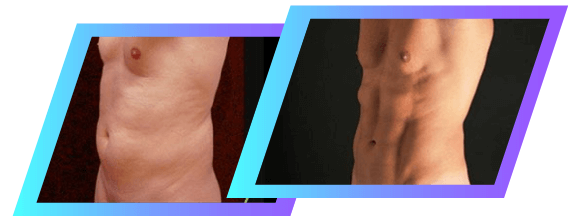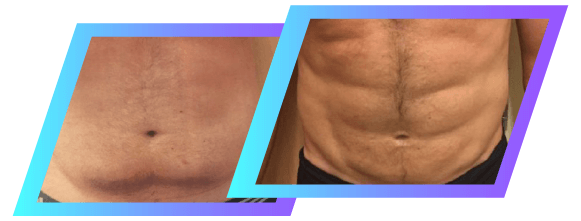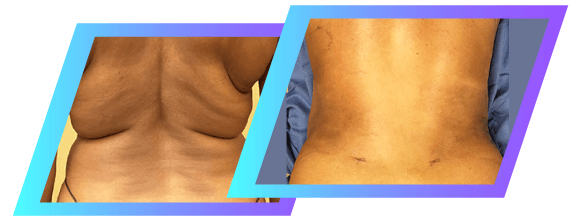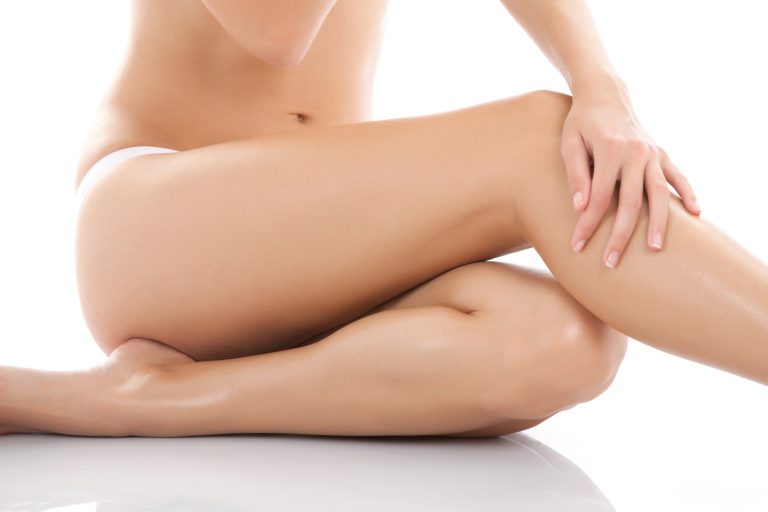Do you have frustrating, uncomfortably swollen legs?
If you have weight gain or swelling on your lower body or arms that is chronic and disproportionate to the rest of your body, you may be suffering from lipedema.
Lipedema develops most frequently in women, although a small number of cases have occurred in men. The current estimate is that as many as 11% of women experience the pain and potential complications of chronic lipedema. Even if you are someone who is completely healthy and leads an active lifestyle, you can develop lipedema. Thankfully, solutions are available.
At this time, only two treatments are available to help relieve the pain and embarrassment of weight gain from lipedema: Combined Decongestive Therapy and Liposuction. While combined decongestive therapy can help to relieve fluid retention and discomfort associated with lipedema, liposuction is the most effective way to eliminate this excess fat from the legs and body and restore smooth, flattering contours.
What is Lipedema?
Lipedema is a fat storage disorder characterized by the overdevelopment of adipose tissue, or fat cells, as well as fluid retention. Lipedema occurs as disproportionate bilateral weight gain, most frequently in the lower body. This weight gain can affect the legs, hips, buttocks, arms, abdomen, and other parts of the body.. The resulting weight gain often creates a “tree trunk” appearance of the thighs and legs. In some cases, lipedema fat can develop on the arms, as well as the lower body. The torso, hands, and feet will not experience the same affect, adding to the uneven look of the figure.
Each case of lipedema can be categorized as mild, moderate or severe.
Lipedema is more than a cosmetic concern: the weight gain is often so dramatic that it impedes comfortable mobility. The legs may be painful to the touch or cause constant, generalized pain. The affected area often bruises easily. This fat storage issue can occur any time after puberty, though it most often occurs after patients experience a hormonal change, such as pregnancy or menopause.
Researchers have yet to determine the cause of lipedema, but they are working toward identifying how hormones, genetics, and metabolism tie into the condition. Of those who develop lipedema, 15% of women have a family history of lipedema, which gives researchers insight into the causes of the disease. Unfortunately, many women do not receive the accurate diagnosis of lipedema, forcing them to think their only options are diet, exercise, or bariatric surgery. Lifestyle changes and bariatric surgery will not be effective against lipedema. Some women are inaccurately diagnosed with lymphedema. Lymphedema results from the malfunction of the lymphatic system. Lymphedema often leads to swelling of the hands and feet, as well as the limbs. In the case of Lipedema, the hands and feet do not swell.
The two proven lipedema treatments available at this time are Combined Decongestive Therapy and liposuction of the excess fatty tissue.
What is Combined Decongestive Therapy?
Combined Decongestive Therapy consists of manual lymph drainage, exercise therapy, lymphatic massage, and compression bandages. Your doctor may also recommend a low-level laser treatment and breathing exercises. While these treatments can alleviate the pain and discomfort associated with lipedema, they will not reduce the fat cells themselves. Patients need to regularly undergo Combined Decognestibe Therapy to relieve their discomfort and see minimal aesthetic improvement from the treatment.
Liposuction is the only treatment available to lipedema patients that eliminates the troublesome fat deposits from the legs, hips, buttocks, stomach, and/or arms. Liposuction enables doctors to improve the look of the legs and restore better mobility for the long-term.
Dr. Jack Friedlander has helped numerous women regain their comfort and confidence by reducing their frustrating lipedema fat with VASER liposuction.
Benefits of VASER Liposuction for Lipedema
You don’t have to live with uncomfortable, embarrassing weight gain and swelling from lipedema. VASER Liposuction is a safe, targeted procedure that can:
- Eliminate excess fat and fluid from the affected area
- Improve contour
- Achieve significant reduction in pain and sensitivity
- Restore comfortable mobility
- Help patients regain confidence in their self-image
- Slim down the legs for long-lasting cosmetic improvement
What is VASER Liposuction?
VASER liposuction is an FDA-approved fat elimination surgery. VASER stands for Vibration Amplification of Sound Energy at Resonance and is the most advanced liposuction technology in the world. VASER liposuction applies ultrasound waves to stubborn fat cells, making them easier to gently break away and extract from the body. VASER not only makes the procedure safer, it also gives doctors an unsurpassed level of surgical precision.
VASER liposuction can safely and effectively eliminate a large portion of the fluid and fat that have developed as a result of lipedema.
Lipedema patients will receive VASER liposuction under IV sedation. The procedure can be performed on an outpatient basis. You will receive personalized instructions to help you prepare for your procedure and recovery.
The VASER method is designed to maximize fat elimination and minimize injury to the surrounding tissue.
VASER liposuction is performed using a only a few tiny incisions, tumescent fluid, and a slim VASER cannula. The VASER probe is a titanium rod that transmits ultrasound energy and emulsifies fat for easier removal. In order to perform VASER on the legs and other areas impacted by lipedema, Dr. Friedlander will first infiltrate the tumescent fluid. Tumescent fluid is a mixture of epinephrine, saline, local anesthetic, and other medications. The fluid will make the fat cells swell and constrict blood vessels in the treatment site. Once the fluid has taken effect, Dr. Friedlander will insert the VASER probe through the tiny incisions. The incisions are typically made in locations where they will be well-concealed in the natural contours of your body. The VASER device will be used to emulsify fatty and fibrous tissue, which will then be removed with special cannulas.
Dr. Friedlander is a body contouring specialist: he will take time to target and eliminate the fat from your legs, hips, buttocks, arms, and any other area affected by lipedema-related weight gain. The preparation and procedure can take several hours. His goal is to both slim down your body and improve your overall contour for the most flattering, natural-looking result. VASER ultrasound energy has the added benefit of stimulating tissue contracture. As a result, the skin in the treated area will become tighter and smoother.
Is Liposuction Worth It?
For the cosmetic results? Yes. For the physical relief it provides lipedema patients? Absolutely. You are an excellent candidate for VASER liposuction if you:
- Have major weight gain in your lower or upper body that does not match the rest of your body
- Have fat that does not respond to diet or exercise
- Are in overall good health
- Are a non-smoker
- Are at a relatively stable weight
- Are dedicated to a healthy diet and active lifestyle for the long-term
- Have a positive but open-minded expectation for your procedure outcome
Results
VASER achieves a major reduction in the size of your legs and other affected areas. You will see results immediately from your VASER treatment: your lipedema fat will be noticeably reduced! There will be swelling and you will feel some soreness/pain in the treated area, but the soreness will begin to improve within the first week to ten days of your recovery. Swelling will continue to decrease as your body accepts its new contours. Patients typically see the final results of their VASER liposuction within six months to a year, however, after surgery for lipedema in the thighs or legs, there can be swelling for several months, and complete healing can take up to 18 months. This recovery period is well worth the relief the procedure achieves. As you heal, you will notice that you no longer experience the pain or discomfort you felt prior to your procedure! Patients say that their newer, slimmer contours gives them better confidence and helps them feel more attractive.
You will receive personalized instructions regarding when you can return to exercise and other physical activities.
VASER liposuction is the most thorough, effective way to diminish the discomfort and overdevelopment of lipedema fat. The results of VASER are durable: your legs will be slimmer for the long-term! Once fat is removed, many women find their metabolic and inflammatory markers improved! Liposuction helps many women with lipedema finally hit the gym and see the results they want.
Patients are advised to maintain a healthy, active lifestyle after undergoing VASER liposuction for lipedema. Poor diet and lack of exercise can encourage the development of lipedema fat in the legs again.
Dr. Friedlander can share the results he has achieved for previous lipedema patients to give you a sense of what the procedure will accomplish. If you are living with lipedema, Dr. Friedlander can help you get back to looking and feeling like yourself. Contact us or call us at (916) 347-7755.
FAQs
Can losing weight help lipedema?
Lipedema is associated with hormonal changes. Studies also suggest that genetics play a role, but more evidence is needed at this time to determine the exact causes of lipedema. While a healthy lifestyle can help keep lipedema fat and inflammation at bay, lipedema cannot be addressed by losing weight alone. The only two lipedema treatments that exist at this time are Combined Decongestive Therapy and liposuction.
Does Liposuction Cure Lipedema?
There is no cure for lipedema at this time. The Lipedema Foundation recommends that each woman seek solutions that make sense and feel the best to them. Liposuction, CDT, exercise, and sources of emotional support are all suggested methods of restoring your quality of life when living with this fat disorder.





